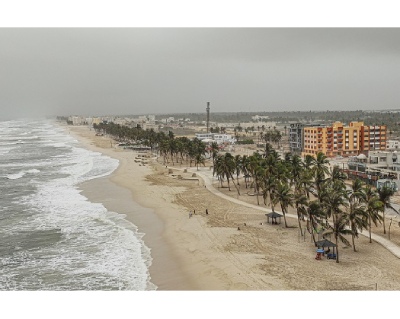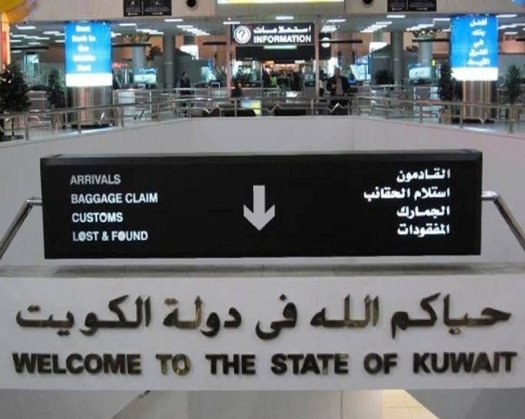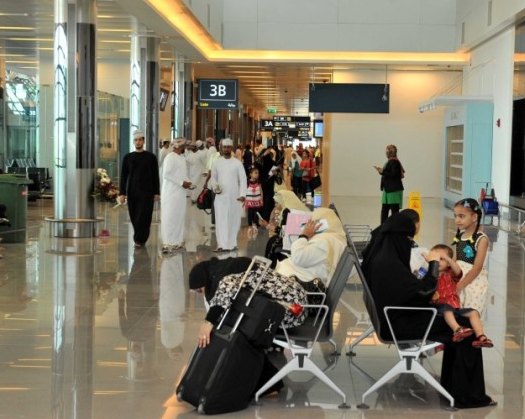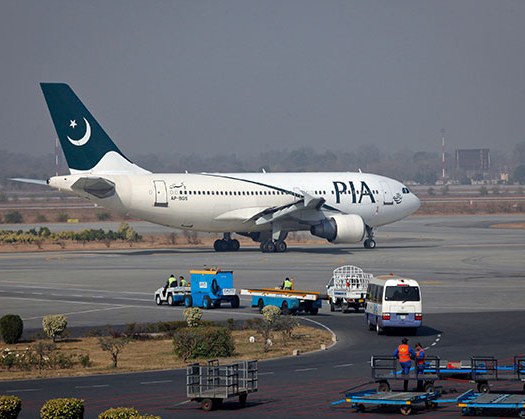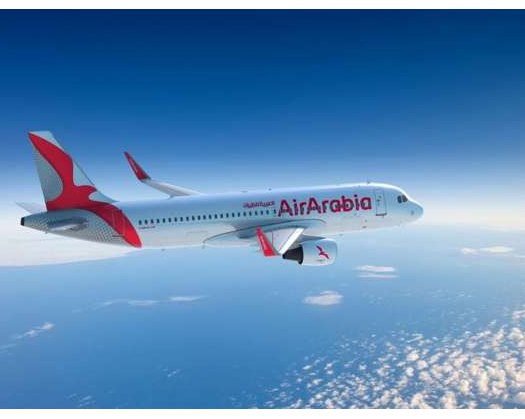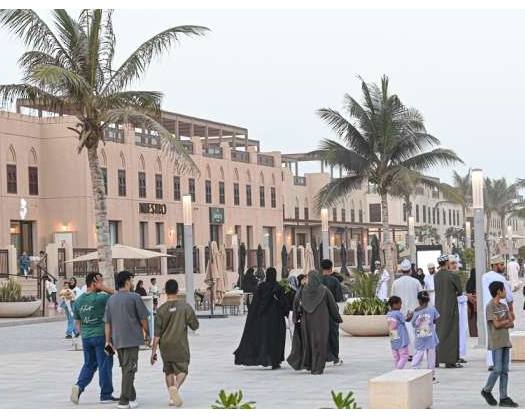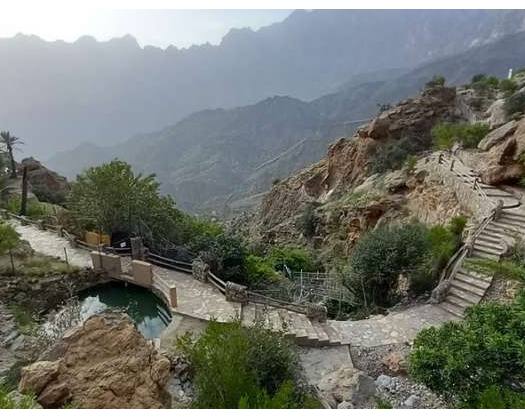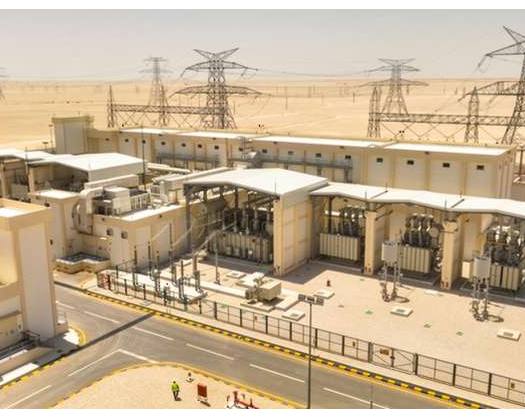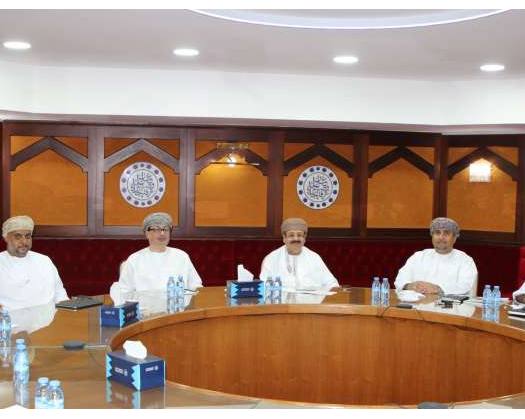Dhofar Governorate boasts numerous stunning beaches that are perfect for tourists and beach enthusiasts to relax and enjoy the Khareef season.
Al Dahariz Beach, situated in Salalah, offers a picturesque view of the Arabian Sea with its soft white sands and tall, beautiful hookah trees. Families often visit this beach to partake in water activities and have a pleasant time.
Covering an area of over 3,500 square meters, the beach provides various amenities such as restaurants, cafes, barbecue spots, and public facilities. Additionally, its proximity to the Khor Al-Dharez Reserve, known for its diverse wildlife and plant species, including flamingos, adds to its allure.
The Dahariz Beach promenade is designed to cater to families, with well-lit pathways, public parking areas, and walkways that are suitable for nighttime strolls.
Located approximately 40 kilometers west of Salalah, Al Mughsayl Beach is a popular destination in Dhofar Governorate, attracting both locals and tourists alike.
This beach offers a long stretch of white sand and blue sea, surrounded by captivating natural landscapes and unique natural fountains. Nestled amidst a series of mountains, Al Mughsayl Beach provides a distinctive and breathtaking backdrop for visitors to enjoy.
The Al-Mughasyl Beach is a popular destination for tourists due to the unique atmosphere during Khareef days. Visitors flock to the beach to admire its stunning attractions and witness the powerful waves of the Arabian Sea, especially during the autumn season when the waves reach impressive heights.
Swimming is not allowed between June 21 and September 21 annually due to the hazardous sea conditions caused by the high waves.
The tourism infrastructure in the Mughsayl area has been significantly improved, with the highlight being the development of the Mughsayl waterfront spanning 174.6 thousand square metres. This area includes various amenities such as a family zone, parking facilities, event spaces, food stalls, restaurants, a beachfront promenade, seating areas, picnic spots, green spaces, exercise areas, water sports facilities, an adventure park, and children's play areas.
Wilayat of Taqah is renowned for its marine fishing activities in the Dhofar Governorate, particularly for the fishing of "sardines" which are commonly used as animal feed and fertilizers after drying. The local population is heavily involved in fishing and livestock farming, and the region also boasts archaeological sites and scenic tourist spots.
The beach in the wilayat of Taqah stretches for 5 kilometers and features soft silver sand and coconut trees lining the coastal road. Additionally, Khor Ruri Beach is an extension of Taqah City's beach and is strategically located near the archaeological site of the ancient city of Samharam, making it a significant historical landmark in the governorate.
The beach is situated within the historical port of Samharam, which previously served as a pivotal location for the exportation of Omani frankincense to various global regions.
The natural landscape of the Taqah Wilayat is characterized by its diversity, encompassing coastal areas, plains, and mountains, alongside numerous caves. This region is further enriched by the presence of several water bodies, including Taqah Creek, Ruri Creek, and a multitude of natural springs.
Located in the easternmost part of the Dhofar Governorate, the Mirbat Wilayat is distinguished by its coastal position, which offers scenic views of the Arabian Sea. It is renowned for its varied beaches, coral reefs, and picturesque bays, situated approximately 76 kilometers from the city of Salalah. This area is recognized as a significant historical and tourist destination within the governorate.
Mirbat Beach is celebrated for its natural allure, featuring silky sand, coral formations, and small bays, locally referred to as (Al Khayas). These bays are particularly notable for their abundance of marine life and coral reefs, establishing them as premier destinations for scuba diving in the Sultanate of Oman.
A substantial portion of the local population in Mirbat is engaged in the fishing industry, which not only sustains their livelihood but also offers visitors an opportunity to learn about the customs and traditions associated with fishing. Additionally, the sight of ships anchored at the sea port's pier and the bustling fish market within the Wilayat provides a glimpse into the local way of life.
The historic fort of Mirbat stands along the coast of the former port of Mirbat, and the ancient state market is acknowledged as one of the oldest in the region for the importation of goods from India, East Africa, and the ports of Basra and Aden. This market was a hub for the exchange of dates, leather, fabrics, various products, and notably, Omani frankincense, which was the primary commodity traded here.
The Wilayat of Mirbat experiences a vibrant tourism industry throughout the year, particularly during the autumn season and on weekends, where visitors engage in activities such as fishing, appreciating natural landscapes, exploring historical sites and ancient pathways, and observing coral reefs and sea waves, all due to the area's rich diversity of marine resources.
Among the most sought-after rare marine fisheries within the Wilayat of Mirbat are the Al-Safilah “abalone” and “Sharkha” species. The abundance of “Al-Safilah” is concentrated along the beaches situated between the Wilayat of Mirbat and the Niyabat of Sharbat in the Wilayat of Shalim, as well as the Al-Halaniyat Islands.
Furthermore, in August 2022, the Omani Abalone Farming Project for the Oman Livestock Company was inaugurated in the Wilayat of Mirbat. This initiative, aligned with the Ministry of Agricultural Wealth, Fisheries and Water Resources' objectives to promote private sector investment in the areas of food security and fisheries, marks a significant step towards diversifying the tourism and economic landscape of the region.

